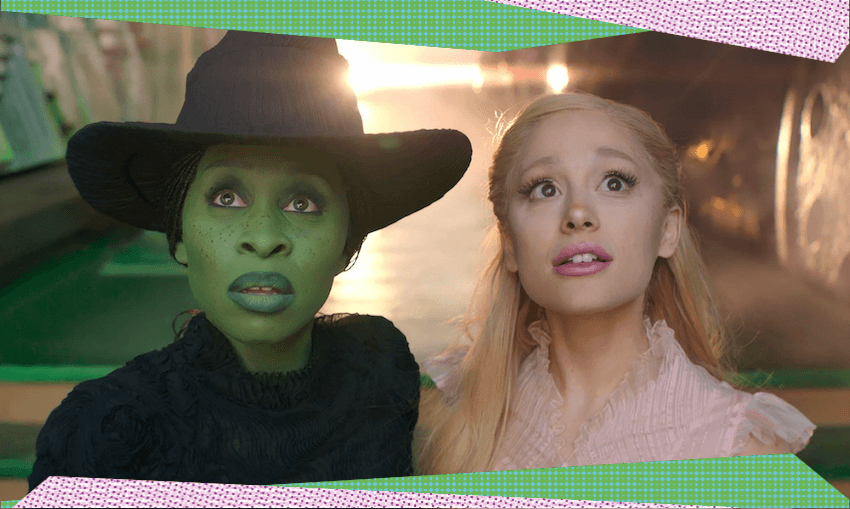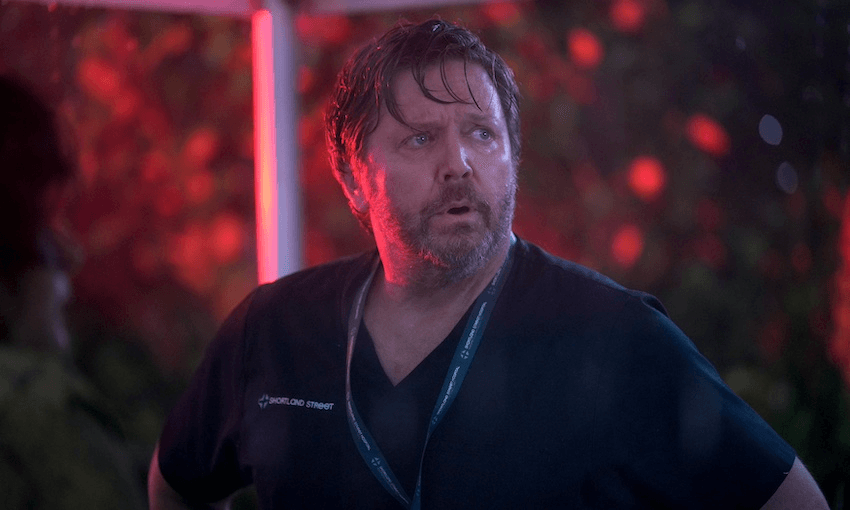The new movie musical is undoubtedly a fun watch, but it’s also proof that bigger isn’t always better, writes Stewart Sowman-Lund.
Contains minor spoilers for Wicked.
There’s no doubt that Wicked is going to be huge. No other pop culture event this year, save from maybe Charli XCX’s Brat, has had the overwhelming presence of Wicked. For the uninitiated, Wicked is a live action film adaptation of the wildly popular, long-running Broadway musical. It’s a prequel to the Wizard of Oz, providing an origin story for the Wicked Witch of the West, Elphaba, and the Good Witch, Glinda. The stage show has been running in the US since 2003, raking in well over $1 billion and becoming one of the biggest musical successes of all time.
While it was inevitable we’d be getting a film adaptation at some point, I imagine there was some hesitation after the travesty that was the digitally fur-laden Cats at throwing a mega budget at a film with a lead character that’s bright green. But after the announcement that Wicked would be helmed by director John Chu (responsible for the excellent adaptation of Lin-Manuel Miranda’s In the Heights), and with pop megastar Ariana Grande and multi-award winning musical theatre legend Cynthia Erivo in the two lead roles, many of those fears were assuaged.
None of my issues with Wicked, the film, lie with any of the creative talents involved. Grande has rightly been thrust into the awards spotlight for her turn as Glinda, and is poised to secure the pop-star-turned-film-star slot at the Oscars that many once felt may be reserved for Lady Gaga in Joker (but we all know how that turned out). Erivo, too, is perfectly cast as Elphaba, providing an emotional counter to Grande’s overwhelming glibness. Some of the strongest moments of the film come when the pair are on screen together, though they also highlight that while Grande clearly has the pipes for the role, she is a pop performer first and foremost and lacks the crisp diction that Erivo has honed from years on the stage.
What I do have an issue with is the decision to split Wicked into two films. Apologies if this is the first you’re learning of this, but while the film has been marketed as just Wicked, an onscreen title card confirms this is actually Wicked: Part One – the story concludes roughly around where the stage production’s first act ends.
I can see no creative justification for splitting what is already a tightly-crafted story into two films, especially given the runtime of Part One is basically the same as the entire Broadway production (interval included) – a whopping two hours and 40 minutes. There are some additional storylines inserted to try and justify the mega runtime, but none of them are particularly interesting. There’s a little more of Elphaba’s childhood, some further exploration of her Hogwarts-esque magical education, and some extra dance breaks here and there. It adds very little and, if anything, makes the runtime drag as the story heads toward its climax.
If you’re familiar with the production, you’ll also know that act one has the show’s biggest and best songs, climaxing with a show-stopping performance of ‘Defying Gravity’, one of the most memorable theatre songs in recent memory (and a surefire way to kill the mood at karaoke). On stage, it works by building anticipation for a second act that will start in 20 minutes. With a year-long intermission, I’m not sure the effect will be quite the same. What we’re left with is half a film that confusingly declares it is “the whole story” at the start, after just telling us we’ll all have to trudge back to the cinema again in 12 months time to learn how it all ends.
One issue that has been persistently called out since the first trailer debuted many months ago is the colour grading, and I’lll admit the decision to add a sepia tone over what should be a technicolour extravaganza was confusing – this isn’t Avengers: Endgame. Placing scenes from Wicked side by side with vibrant moments from the 80-year-old Wizard of Oz only highlight this.
Those quibbles aside, there is a lot to love about Wicked. Where Joker 2 was a misfire for its shabby musical direction, Wicked’s most Broadway moments soar. It feels like stepping into the live show and Chu, who has proven credentials with movie musicals (yes, even Step Up), effortlessly invites us into the world. The decision to rely on practical sets and, where possible, effects, contributes to a real life musical theatre feel. It has flashy set pieces, for sure, but often works best in its quieter moments. The rendition of ‘Popular’, with just Grande and Erivo in a university dorm room, is a highlight, as is the emotional peak when Elphaba and Glinda first forge their unlikely friendship.
And, yes, Defying Gravity retains its theatrical power on the big screen – I just wish it came in the middle rather than the end.
Verdict: I found more to love than hate about Wicked: Part One. It’s a product of Hollywood’s unfortunate obsession with bigger meaning better, but it’s also one that has a lot of heart and creative freedom at its core.



